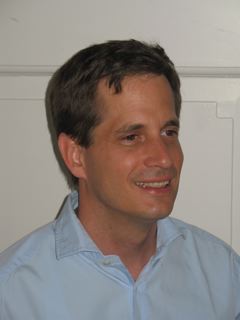The Theory of Causal Fermion Systems
Operator Algebras
Prerequisites
Continue Reading
Related Topics
Operator Algebras
Causal fermion systems give rise to operator algebras in two essentially different ways:
Algebras Generated by Spacetime Point Operators
Given a causal fermion system $(\H, \F, \rho)$ and an open set $\Omega \subset M$ of spacetime, one forms the vector space of all spacetime operators smeared out by integration over ontinuous functions,
\[ L_\Omega := \Big\{ \int_M\: f(x)\, x\: d\rho(x) \: \Big| \: f\in C_0^0(\Omega,\C) \Big\} \:. \]
Then one takes the *-algebra generated by these smeared spacetime operators,
${\mathfrak{A}}_\Omega := \la L_\Omega \ra$ .
This algebra was introduced and analyzed in [FO20]. It was shown to have the following properties:
- The smeared spacetime point operators do not satisfy the local commutation relations. The commutator is in general non-zero even if the supports are spacelike separated.
- In the example of the regularized Minkowski vacuum, a time-slice axiom holds.
- Again in the example of the regularized Minkowski vacuum, the causal structure is encoded in the algebra via the singular behavior of operator products when the regularization length $\varepsilon$ tends to zero.
The last point gives a connection to the events, tries and histories (ETH) formulation of quantum theory (see [FFOP20] or the explanations on the relation to other theories). Namely, if $\Omega$ lies in the causal future of a spacetime point $x$, then $x$ lies in the center of the algebra ${\mathfrak{A}}_\Omega$, up to an error involving a positive power of the regularization length.
The Algebra of Field Operators
Operator algebras also arise in [FK21] when making the connection to quantum field theory. In this context, one associates operators to the solutions of the linearized field equations (the bosonic operators) and of the dynamical wave equation (the fermionic operators). These operators satisfy canonical commutation respectively anti-commutation relations. The unital *-algebra generated by these operators is denoted by $\mathcal{A}$. It corresponds to the algebra of observables as considered in the algebraic formulation of quantum field theory. In this formulation, the quantum state $\omega^t$ is a positive linear mapping from $\mathcal{A}$ to the complex numbers. Fock spaces arise when constructing representations of this algebra.

Felix Finster
Author